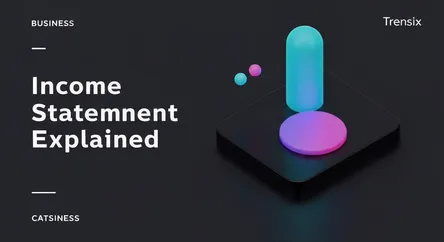Business
Income Statement Explained

Understand the Income Statement, a key financial report showing a company's profitability over time. Learn its components and why it's vital for business.
What is it?
An income statement, or Profit and Loss (P&L) statement, is a key financial report showing a company's performance over a specific period. It summarizes revenues and expenses to reveal the net income or loss. The basic formula is Revenue - Expenses = Net Income. Key components include revenue, Cost of Goods Sold (COGS), gross profit, operating expenses, and the final "bottom line." It provides a clear snapshot of how profitable a business was during a set time, like a quarter or a year, detailing operational efficiency.
Why is it trending?
The income statement is always a focus during corporate earnings season when investors scrutinize results to gauge a company's health. In a volatile economy, its importance grows as profitability and cost management become critical indicators of business resilience. There is also a rising trend in financial literacy among entrepreneurs and small business owners who use the P&L statement to make data-driven decisions. This makes it a consistently relevant tool for tracking performance and planning for the future.
How does it affect people?
This report directly impacts various stakeholders. Investors use it to make buy or sell decisions on stocks. Business owners and managers rely on it for strategic planning, from setting prices to controlling costs. Lenders review it to assess a company's creditworthiness for loans. For employees, a healthy income statement can mean job security and bonuses, while a poor one may signal financial trouble. It's a financial report card that influences major decisions for everyone connected to the business.